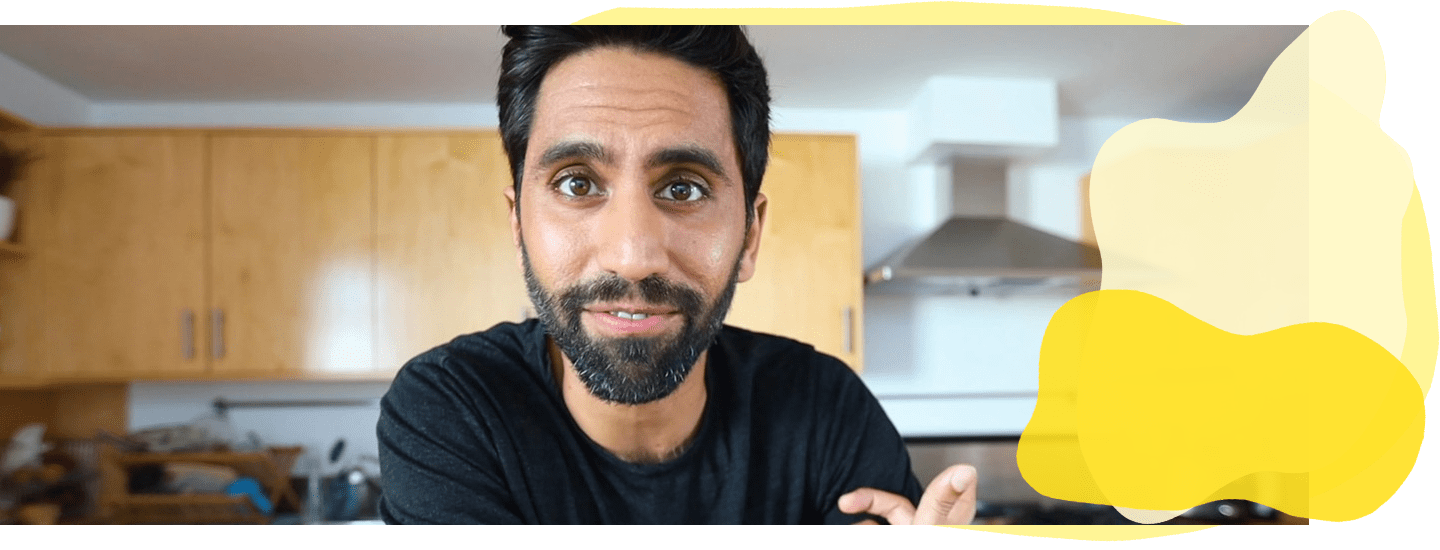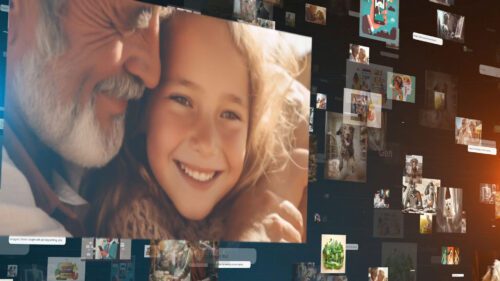Every morning when I wake up and turn on the news, I ask myself, “What can I do to help? What can I do to be productive today?” and the answer is always “Tell stories. Really really good stories.”
Storytellers thrive during times like this. When connection feels tougher to come by, we can be there to offer it.
So it’s time to rethink our homes, our days spent inside, and our creative process. Every room is now a different set, and all of the tools we need are at our disposal. Even though our routines have changed, and we can’t go outside, there are tons of ways to get creative and tell stories from home.
So, here are some tips from us on how we tell stories while at home.
1. How to Develop Your Idea
The first question we ask ourselves when we want to tell a story is, “Who are we making this for?” Instead of thinking about creating for a vast audience, we like to think of creating for an “Audience of One.”
Pick one person who is the intended audience for your video. Think about their likes, dislikes, and things they would find funny. From there, choose an emotion that you want them to feel after watching. Should they feel happy, informed, excited, less alone, etc.? If your video can resonate with that one person, they will share it with likeminded people.
Lastly, we like to ask ourselves, “What would make this video a success?”
Is it people sharing it, or is it more personal? Is the act of finishing and pressing publish enough to feel validated once the process is complete?
One you ask yourself these questions, you’re ready for the next step.
2. Write Your Script
Our most successful videos on YouTube all started with really concise scripts. We start our videos by writing them out first as if they were an essay. We let ourselves write freely, understanding that this isn’t going to be the final product. Once we get all of our thoughts out, it’s time to format them into an ACT 1, ACT 2, ACT 3 structure.
ACT 1
The start of your video is all about making sure your audience knows what to expect and making sure they want to watch until the end.
What’s the hook that will open the video and keep your audience watching?
This could be an exciting clip that cuts off before the climax.
We also like to use narration that poses an intriguing question the audience wants to see answered.
ACT 2
The middle of the video is what we call the “meat” of the video. This is about following through on what you told your audience they would see in ACT 1.
This section is the journey you’re taking your viewer on.
ACT 3
This section answers the question, “So what?”
This is your chance to drive your point home directly to the audience.
We like to tell them what they should have learned from the journey they just went on, and give them the chance to offer us feedback in the comments.
3. Record Voice Over or Host your Script
Now that your video is written, you can start production. We like to use either the microphone on our cameras or the voice recording app on our phones to lay down a track.
If you’d rather be on camera, you can also face a window for optimal lighting and host the script, speaking directly to your audience. Our favorite thing to do is use a combination of both to tell a story. Before moving on to Step 4, pull your footage and/or audio into an edit timeline and do the first pass to make sure the story makes sense.
4. Edit using B-roll Footage, Audio and AE Templates
This is the really fun part. Now that your story makes sense, you can get creative by adding b-roll, graphics, and music.
The Storyblocks library comes in handy more than ever right now for us, considering we can’t get outside to film. There are so many clips, sound effects, music tracks, and After Effects templates to get creative with.
Spend your time searching for the right footage and use what you discover to cover your edit and make it more engaging.
5. Upload, Share and Ask for Feedback
Storytelling in the modern era is a two-way street. Don’t be afraid to publish even if your video doesn’t feel 100% polished. Getting feedback from your audience is a part of the process. Take that feedback, make changes, and go make another video tomorrow. Our skills as storytellers are never finished evolving. Your next video always offers another lesson in how to be better.
The world needs good stories that help people connect, and even if you don’t own a camera, you can tell a story. With a phone, a computer, and access to content, your stories can make an impact and spread to millions of people.



